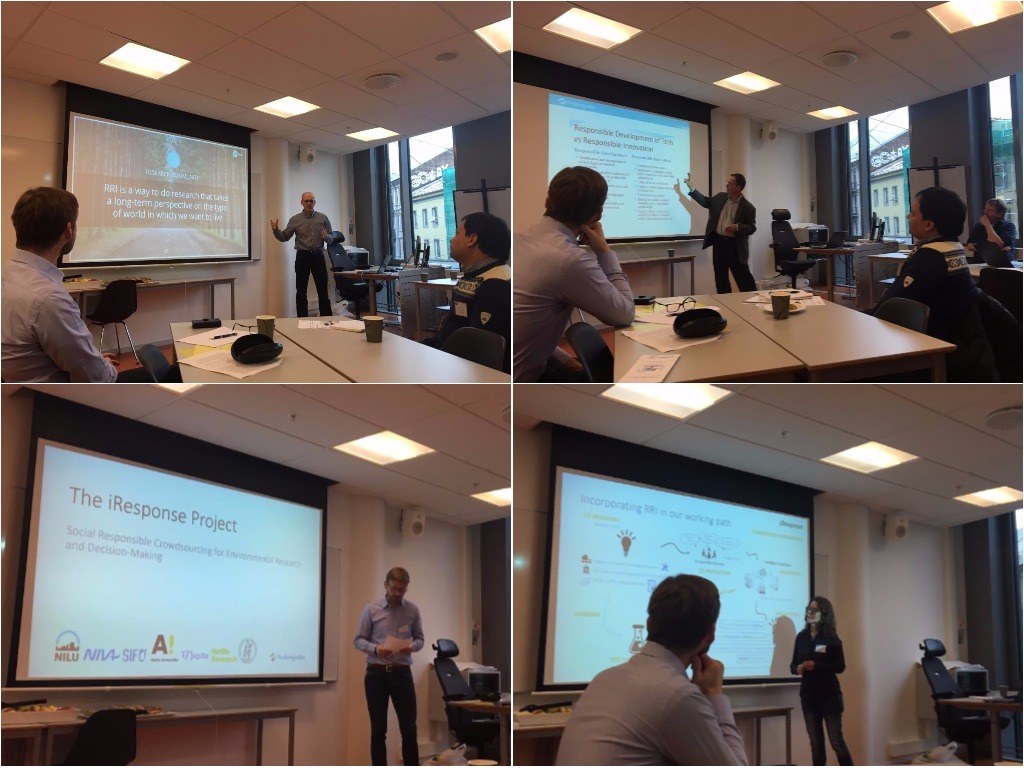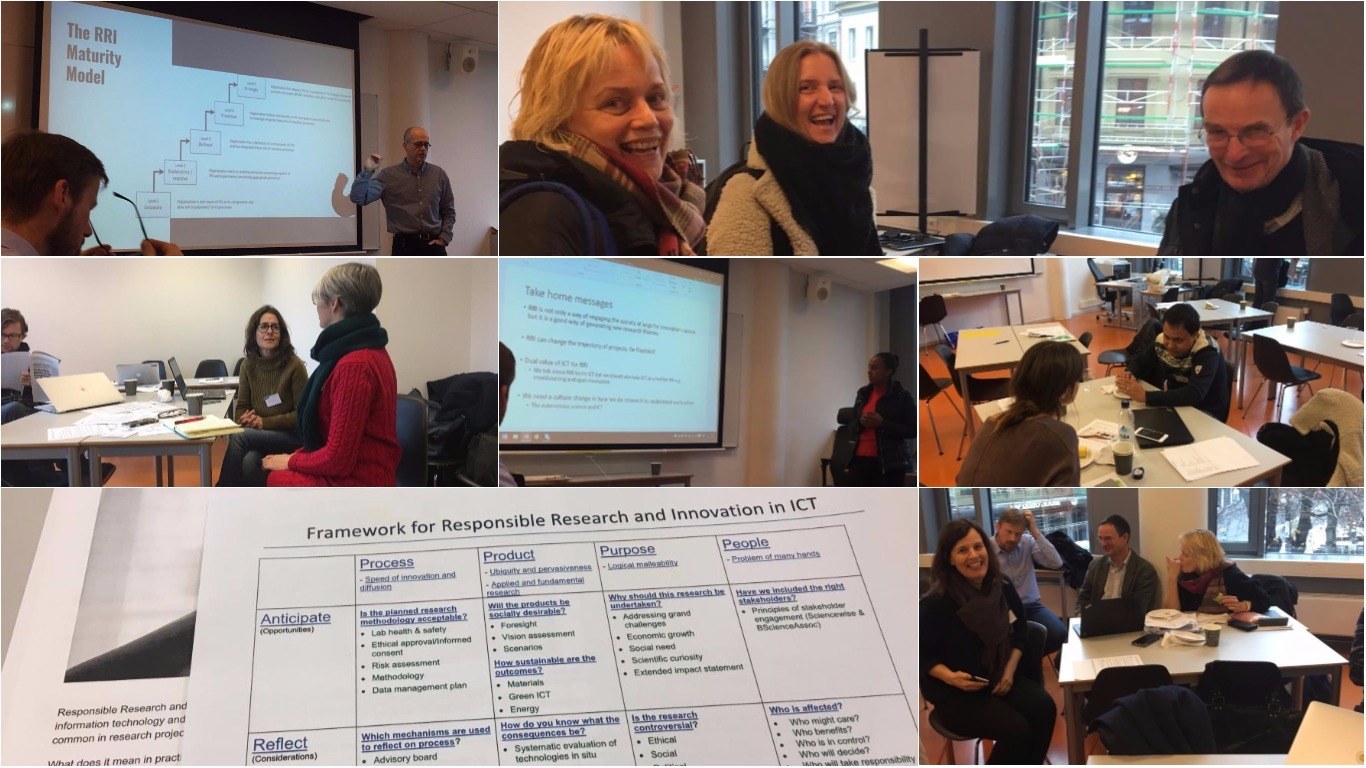RRI workshop- Lost in translation?
On 16th November 2017, the iResponse project conducted a successful workshop on the theme “Moving Responsible Research and Innovation (RRI) from the conceptual to the practice”.
The workshop was attended by 21 persons who came from universities, research institutions and funding agencies.
While the two keynote speakers, Prof. Bernd Stahl from De Montfort University (Leicester, UK) and Helge Rynning from the Research Council of Norway, shared their views on RRI from conceptual and funding perspectives, Harald Throne-Holst (SIFO/HiOA) and Susana Lopez-Aparicio (NILU), shared how RRI has been applied in the iResponse project.
Important questions and discussions enriched the open dialogue session. We summarized the key points under the three questions that were formulated to guide the workshop.

Find the agenda and presentations from the workshop here.
What does RRI mean in practical terms?
Harald started the workshop by also mentioning the comments he received on Twitter from a philosopher, who tries to warn against the separation of the conceptual from the practice, as the practice is part of the conceptual. Through the workshop, it became clear that the practice and the conceptual world are shaping each other and new tools for measuring impact are developed while at the same time the discourse to fill the knowledge gap is growing.
In practical terms, all the presenters agreed that applying RRI means aligning Research and Innovation with the values and needs of the society. It can be achieved by engaging stakeholders (e.g. professionals and the public) to address the grand challenges that are set out e.g. in the Sustainability Development Goals (SDGs).
It also means ensuring the indicators for the 6 pillars (i.e. public engagement, ethics, gender equality, governance, open access and science education) are met. Yet it was also discussed during the workshop that catering to these pillars are important, but not sufficient for an RRI process.
How can we facilitate the uptake of RRI?
Interesting examples regarding how RRI uptake could be facilitated were given from the iResponse project. In order to facilitate, first, we need to understand the barriers. Some of the barriers mentioned include the difficulty of reaching stakeholders and conflicts that arise when working across disciplines.
For the latter, participants suggested the need to trust and respect each other. In addition, the need for cultivating a new culture of working across disciplines with an open mindset was mentioned as the way forward.
Diversification of participation channel is indicated as something that can be drawn from the iResponse experience. Like for example, reaching the public through web survey, social media and stakeholder workshops.
How can we measure the impact of RRI?
Various tools and frameworks were presented to assess and measure the impact of RRI. One of them was the EU RRI indicators set.
Prof. Bernd Stahl introduced the AREA framework- Anticipate, Reflect, Engage and Act- and the maturity model for assessing organizational readiness for practicing RRI.
In addition, he introduced the ORBIT framework and self-assessment tool, an interactive online tool for ICT projects (but can also be used for other), which helps projects and institutions to know which part of the RRI process they have addressed.

...............
This summary was written by Selamawit Molla Fossum (IFI-UiO).
Photos: Line Barkved.